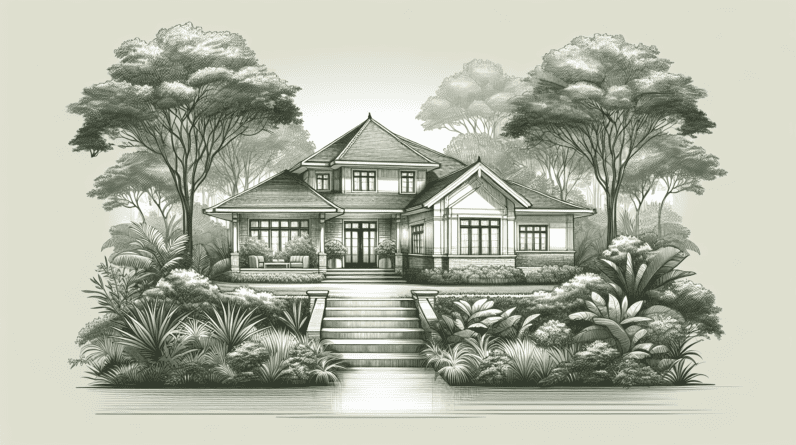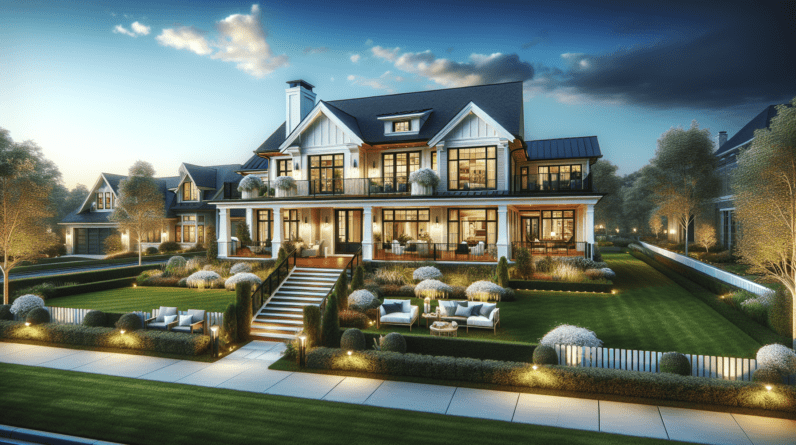Bronxville, a village in Westchester County, New York, is a hub of real estate development with a rich history spanning over 150 years. The village has a unique architectural landscape, boasting some of the most impressive buildings and homes in the county. This article explores the history of real estate development in Bronxville, from its early beginnings to the present day.
Table of Contents
- Early Beginnings of Real Estate Development in Bronxville
- The Advent of the Railroad
- Village Incorporation and Expansion
- The Role of the Bronxville Women’s Club
- Architecture and Design in Bronxville
- The Impact of World War II
- Post-War Development
- Preservation and Restoration Efforts
- Modern-Day Real Estate Development in Bronxville
- Bronxville’s Real Estate Market Today
- The Future of Real Estate Development in Bronxville
- Conclusion
- FAQs
1. Early Beginnings of Real Estate Development in Bronxville
Bronxville’s real estate development began in the mid-19th century when the village was still a rural area. Wealthy New Yorkers discovered the natural beauty of the region and began to purchase land and build homes. A few of the notable early property owners were William Van Duzer Lawrence, a prominent New York City lawyer, and Samuel Edgerly, a wealthy businessman.
2. The Advent of the Railroad
The development of the railroad in the 1860s had a significant impact on the real estate market in Bronxville. The New York and Harlem Railroad opened a station in the village in 1864, which made it easier for wealthy New Yorkers to travel to and from the city. This resulted in an increase in the demand for property in the area.
3. Village Incorporation and Expansion
In 1898, Bronxville was officially incorporated as a village. The new village government began to invest in infrastructure and amenities such as schools, roads, and parks. This led to an increase in property values, and many new homes and buildings were constructed during this time.
4. The Role of the Bronxville Women’s Club
In the early 20th century, the Bronxville Women’s Club played a significant role in the development of the village. The club was responsible for the construction of the Bronxville School, which opened in 1914, and the Bronxville Public Library, which opened in 1921. These two institutions helped to make Bronxville a desirable place to live and raised property values in the area.
5. Architecture and Design in Bronxville
Bronxville’s architecture and design have always been a point of pride for the village. The village is known for its mix of architectural styles, including Tudor Revival, Colonial Revival, and Mediterranean Revival. Notable architects who worked in Bronxville include William A. Bates and Lewis Bowman.
6. The Impact of World War II
World War II had a significant impact on the real estate market in Bronxville. Many of the village’s residents were called to serve in the war, and the construction of new homes and buildings came to a halt. After the war, there was a surge in demand for housing, and many new homes were built to accommodate returning soldiers and their families.
7. Post-War Development
The post-war period saw a significant increase in real estate development in Bronxville. Many of the new homes built during this time were ranch-style homes, which were popular in the 1950s and 1960s. The village also saw an increase in commercial development, including the construction of the Bronxville Shopping Center in 1955.
8. Preservation and Restoration Efforts
In the 1970s, there was a growing concern among Bronxville residents about the preservation of the village’s historic architecture. The Bronxville Historical Conservancy was founded in 1977 to promote the preservation of the village’s historic buildings and homes. Since then, there have been numerous efforts to restore and preserve the village’s architectural heritage.
9. Modern-Day Real Estate Development in Bronxville
Today, real estate development in Bronxville is focused on preserving the village’s unique character while also meeting the demands of modern living. The village has strict zoning laws that regulate the size and style of new construction, ensuring that new buildings fit in with the village’s historic architecture.
10. Bronxville’s Real Estate Market Today
Bronxville’s real estate market is highly competitive, with homes selling for well over $1 million. The village’s prime location, excellent schools, and charming small-town feel make it a desirable place to live for many families.
11. The Future of Real Estate Development in Bronxville
The future of real estate development in Bronxville is likely to focus on sustainability and energy efficiency. The village has already taken steps to promote energy efficiency by offering incentives for homeowners who install solar panels or upgrade to more energy-efficient appliances.
12. Conclusion
Bronxville’s rich history of real estate development has shaped the village into what it is today. From its early beginnings as a rural area to its current status as a highly desirable suburban community, the village has always been a hub of architectural and real estate innovation. Today, the village is a vibrant community that continues to attract families and individuals looking for a unique and charming place to call home.
13. FAQs
- What is the average price of a home in Bronxville? A: The average price of a home in Bronxville is around $1.8 million.
- Who are some notable architects who worked in Bronxville? A: William A. Bates and Lewis Bowman are two notable architects who worked in Bronxville.
- What is the Bronxville Women’s Club? A: The Bronxville Women’s Club is a historic organization that played a significant role in the development of the village, particularly the construction of the Bronxville School and the Bronxville Public Library.
- How has the real estate market in Bronxville changed over the years? A: The real estate market in Bronxville has become increasingly competitive over the years, with home prices rising steadily due to the village’s prime location and excellent schools.
- What is the future of real estate development in Bronxville? A: The future of real estate development in Bronxville is likely to focus on sustainability and energy efficiency, with the village taking steps to promote these initiatives.






